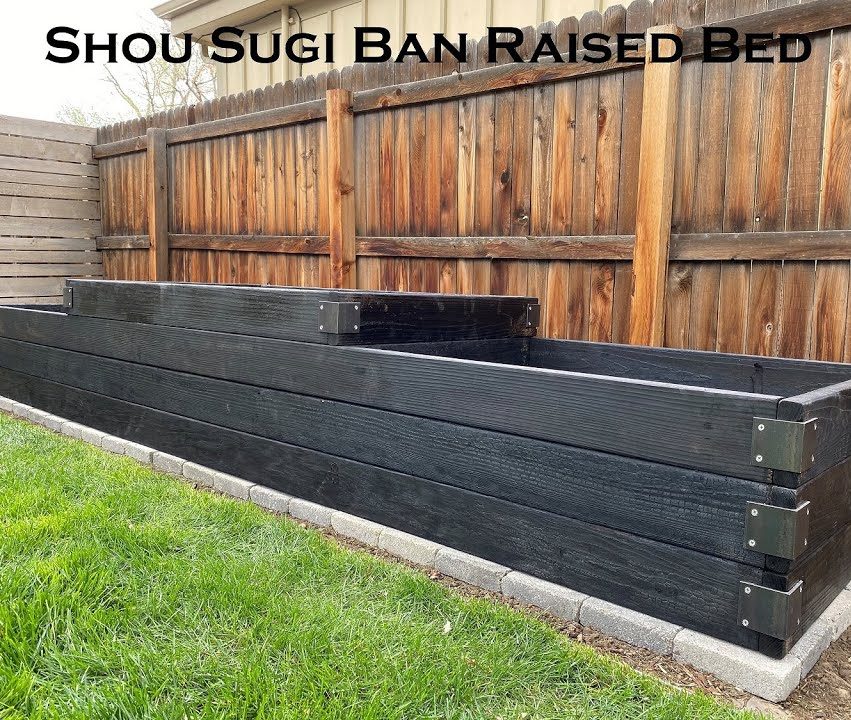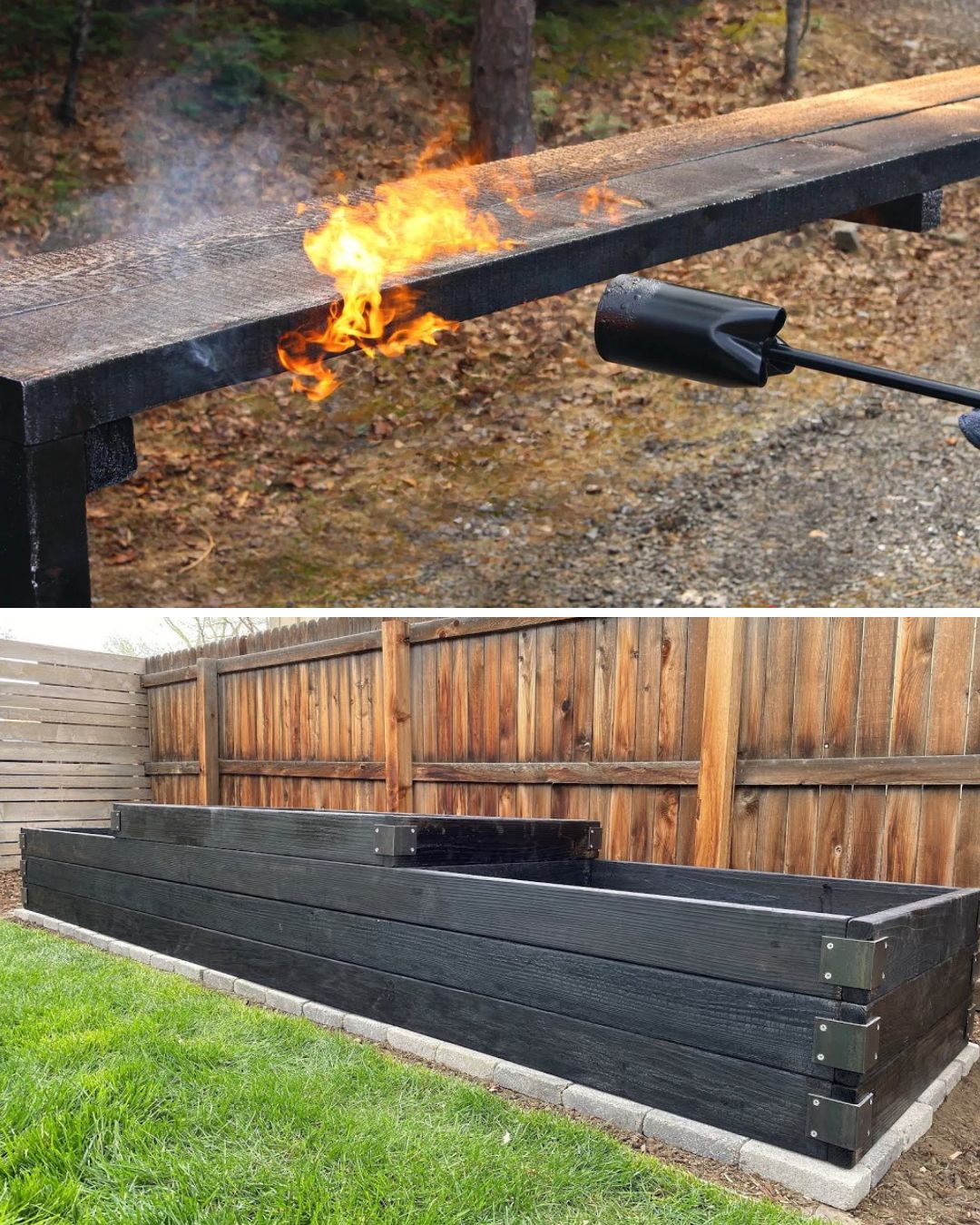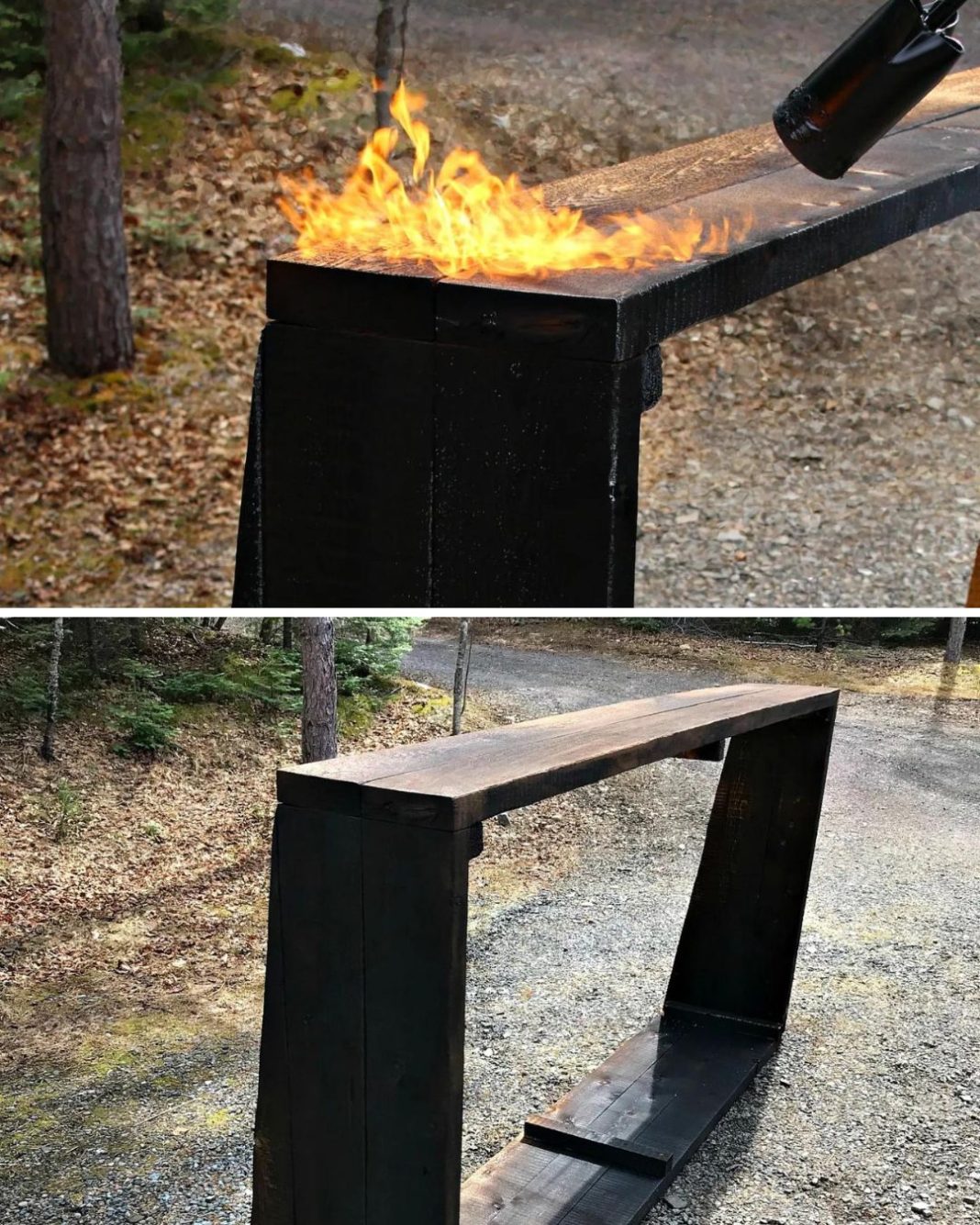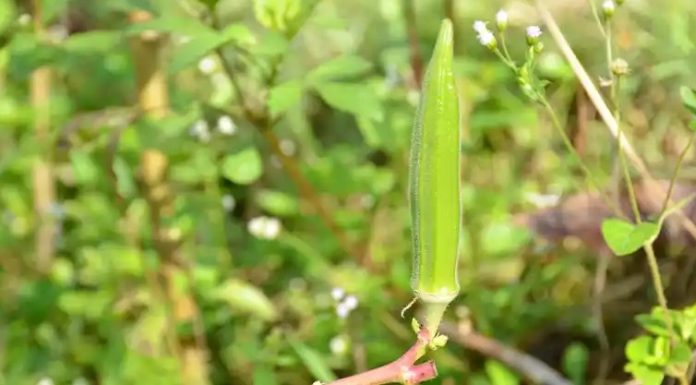When designing gardens, people often want something that lasts and looks good. In Japan, there’s a very old technique called Shou Sugi Ban that does just that. Originally used to protect wood by burning it, it’s now being used to make raised garden beds. Not only does it make the wood stronger against bad weather, bugs, and rot, but it also makes the beds look really cool. In this article, we’ll talk about why and how you can use Shou Sugi Ban for your garden beds. Plus, we’ll make sure to mention safety so you can do it safely.

Why Use the Shou Sugi Ban Method?
1. Durability: The charring process significantly increases the wood’s longevity, making it an ideal choice for outdoor applications like raised garden beds.
2. Pest Resistance: Charred wood is less appealing to pests such as termites and carpenter ants, reducing the need for chemical treatments.
3. Rot Resistance: The burning process removes surface cellulose, creating a barrier against moisture — a primary cause of wood rot.
4. Aesthetic Appeal: Shou Sugi Ban-treated wood has a unique, deep black finish that can turn silver-gray over time, adding a distinctive look to your garden.
How to Burn Wood Frames Using the Shou Sugi Ban Method
Materials Needed:
- Cedar, redwood, or any other suitable wood for raised beds
- Propane torch
- Wire brush
- Sandpaper (fine-grit)
- Natural oil (optional, for finishing)
- Safety equipment (gloves, goggles, respiratory mask)

Step-by-Step Guide:
Preparation: Choose a well-ventilated, outdoor area away from flammable materials. Wear safety gear to protect against heat, flying debris, and fumes.
Torching the Wood: Using a propane torch, evenly apply flame to the surface of the wood, moving the torch back and forth to avoid burning too deeply. Aim for a consistent char across the entire surface.
Brushing: Once the wood has cooled, use a wire brush to remove loose char and ash, revealing the grain. This step enhances the wood’s texture and prepares it for finishing.
Sanding: Lightly sand the surface with fine-grit sandpaper to smooth any rough edges, being careful not to remove too much of the charred layer.
Applying Oil: (Optional) For additional protection and to bring out the wood’s natural beauty, apply a coat of natural oil. Linseed or tung oil are excellent choices. Allow it to dry thoroughly.
Assembly: Construct your raised garden bed frames as desired, using the treated wood.
Safety Disclaimer
While the Shou Sugi Ban method can be safely applied at home, it involves open flames and significant heat, presenting potential hazards. Always prioritize safety by working in a well-ventilated area, wearing protective gear, and keeping a fire extinguisher nearby. Never leave the torch unattended while it is lit, and ensure all flames are fully extinguished after completing your project. It is also recommended to consult or hire professionals if you’re unfamiliar with using a propane torch.
By integrating the Shou Sugi Ban method into your raised garden bed construction, you not only enhance the durability and aesthetics of your garden but also engage with a sustainable practice that minimizes the need for chemical treatments and frequent replacements. With the right precautions and steps, you can achieve stunning, long-lasting wood frames that will serve as a testament to both your gardening and craftsmanship skills.










